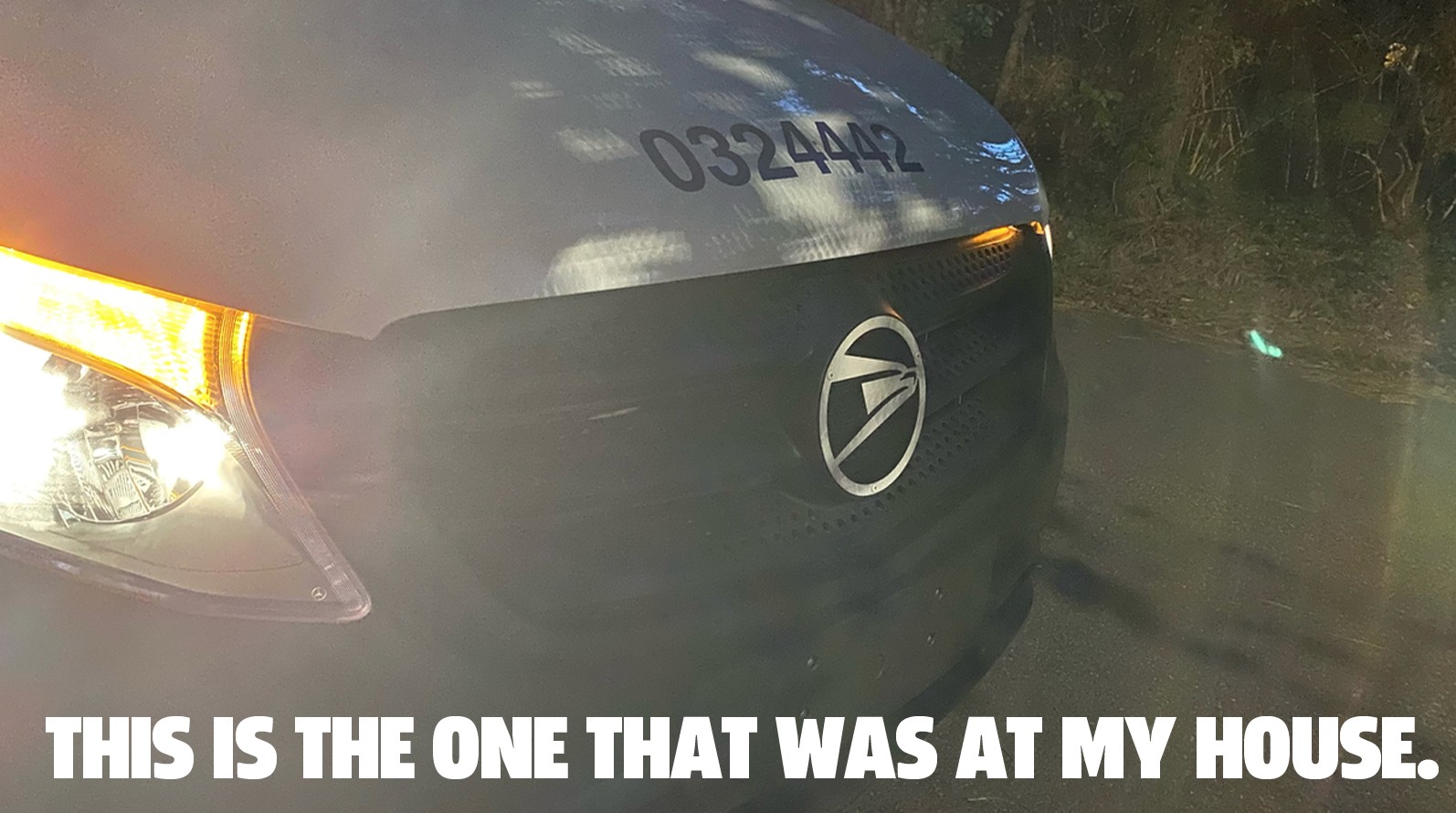Mail trucks are an iconic part of the American landscape, and for many, the Grumman Long Life Vehicle (LLV) has been the definitive image of postal service delivery for decades. As these aluminum workhorses, built upon the Chevy S-10 pickup, approach retirement, the United States Postal Service is transitioning to new vehicles. While the long-awaited electric replacements are still on the horizon, the USPS has already begun incorporating interim solutions like Ram Promaster and Mercedes-Benz Metris vans into their fleets.
Recently, a Mercedes-Benz Metris van in full USPS livery made an appearance, sparking curiosity due to a notable alteration: the signature Mercedes-Benz tri-pointed star on the grille had been replaced with a badge featuring the Post Office’s eagle emblem. This change, while subtle, raises an interesting question: why the badge swap?
Seeking answers, inquiry was made with a local mail carrier, who happened to be training a new recruit in a Metris van. From the vantage point of his own Grumman LLV, the veteran mailman offered an immediate explanation for the badge modification:
“They decided to take off the Mercedes badge because they were afraid that people would see that and think we were spending too much money.”
The “they,” in this context, refers to USPS management. This rationale, at first glance, seems quite plausible. In the United States, Mercedes-Benz is overwhelmingly associated with luxury vehicles, despite the automaker’s extensive global production of utility and commercial vehicles.
Furthermore, the Postal Service often faces public and political scrutiny regarding its financial management, even though, arguably, it provides exceptional value. Consider the fact that a first-class letter can be mailed across the country for a mere 55 cents – a bargain by any measure.
However, the question remained whether this perceived cost-saving measure was the actual motivation behind the badge replacement. Aesthetically, the eagle badge arguably integrates more seamlessly with the USPS branding than the Mercedes star, at least in this specific application.
To gain official insight, the Postal Service was contacted for comment. The official response stated:
“It is common practice to remove manufacturer’s nameplates as part of the upfit process. The Postal Service does not endorse any vehicle manufacturer or advertise on a manufacturer’s behalf. As part of our decal package we chose to use the USPS trademark eagle symbol instead of the vehicle manufacturer’s symbol. All decal markings are installed as part of the vehicle acquisition contract.”
This official statement, while informative, sidesteps the underlying reasons for the badge substitution. While the USPS may have the prerogative to alter vehicle badging, the assertion that removing manufacturer’s nameplates is “common practice” warrants closer examination when considering postal service vehicle history.
Looking back at the iconic Jeep DJ Dispatcher, the “Postal Jeep” of the 1970s and 80s, a different picture emerges.
Official Postal Service imagery from 1970 clearly showcases the manufacturer’s name, “Jeep,” boldly emblazoned on the rear door. This historical precedent contradicts the claim of a consistent practice of badge removal.
It’s true that the Grumman LLVs, purpose-built exclusively for the USPS, never featured external manufacturer badging. However, these vehicles were unique cases, designed and manufactured specifically for the Postal Service.
Perhaps the “common practice” is a more recent policy? However, even contemporary examples challenge this assertion. The USPS has, in recent years, incorporated Ram Promaster vans into their fleet, and these vehicles retain their original Ram badging.
The Ram logo is unmistakably present, indicating that not all manufacturer badges are systematically removed from USPS vehicles.
Therefore, considering the available evidence, the mail carrier’s initial explanation – public perception and cost sensitivity – appears to be the most compelling motivation for the Mercedes badge swap.
In reality, this is likely a prudent decision. The eagle badge reinforces USPS branding on the vans, creating a stronger visual identity. Moreover, it preemptively avoids potential public criticism, however misinformed, about the Postal Service utilizing “luxury” vehicles.
It’s easy to imagine the hypothetical outcry: the same segments of the public seemingly indifferent to mail carriers enduring sweltering conditions in un-air-conditioned LLVs might suddenly express outrage at the notion of postal workers driving “opulent” Mercedes-Benz vans.
It’s crucial to emphasize that the Mercedes-Benz Metris is not a luxury van. It’s a practical, utilitarian vehicle, robustly constructed but far from extravagant. These vans are even assembled in Mercedes-Benz’s Charleston, South Carolina, factory, partly to navigate import regulations.
Ultimately, regardless of the official explanation, the USPS’s decision to replace the Mercedes badge with their own eagle emblem is a strategically sound move. For those familiar with automobiles, the true nature of these vans is readily apparent, and the badge swap is unlikely to cause genuine confusion. It’s a preemptive measure addressing potential misperceptions, and in that context, a rather sensible one.
